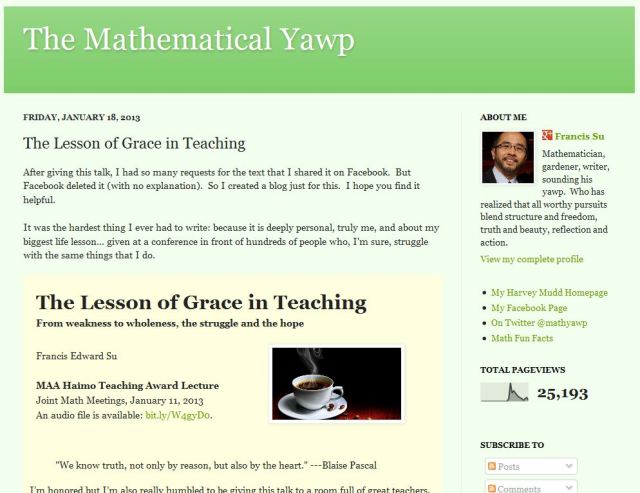At convocation today, some colleagues were reminiscing about their own former teachers and their methods for securing their students’ attention. One remembered a teacher who threw a baseball at inattentive pupils. Another recalled the whack of a meter stick on a desk. I had a teacher who could emit a piercing whistle through his fingers. We all remember the “hollerers.”
Not gifted with a booming voice? Neither am I. A colleague once shared that by the end of the first week of a new school year, she found herself physically tired from projecting her voice. I could sympathize. I don’t like to shout. A shouting teacher sounds to me like a teacher who has lost both her students’ respect and control of her classroom. And it just seems rude.
I seldom encounter disruptive students, and most episodes of excessive chattiness in the classroom seem to result from innocent obliviousness. I usually deal with these situations by simply ceasing to speak. Within a few seconds, all eyes turn to the talkers and other students typically do the “shushing” for me. Rarely do I need to repeat this process.
A different–and happier–challenge to obtaining attention occurs more frequently. Since I incorporate lots of group work into my classes, my lab can get a little noisy. When I first began teaching, I tried raising my voice (didn’t work), clapping my hands (nope), and pounding on the table (more effective, but, again, rude). I needed a way to help me transition from group collaboration back to focused attention on the instructor more quickly, and I needed to do it in an inoffensive way.
When the going gets tough, the tough go shopping, right? While browsing in Pier One for some of life’s essentials, I found this little gem in the sale bin. It filled the bill perfectly….a little glitz, pleasant timbre, adequate decibels, portable, and, darn it, kinda cute. Now when I need to muster the troops for the next step in a lab, to rotate stations, or to complete a pair-share activity, I just apply an energetic “ding-ding!”
The bell has become part of class culture. If I happen to be out of arm’s reach when I need the class’s attention, a student will often holler “Ding, ding!” It works as well as the real thing every time.
I recently enjoyed a piece on NBC news showing America’s top teacher in action, and I was delighted to see that she uses a bell much like mine. She has gone beyond simply using it as an attention-getter, ringing it to celebrate correct responses. Here’s Rebecca Mieliwocki ringing her bell and firing up her class…and us!:
http://video.msnbc.msn.com/nightly-news/47165894#47165894
Do you have a way to get your students’ attention? Share, please.
—Karen
 Maybe it’s because the brisk fall air promises that Thanksgiving will soon be here, but I always find it easier to count my blessings in the autumn. And now that I’m in that metaphorically autumnal season of life, I more often recall with gratitude all the teachers who’ve given of themselves so that I could have the pleasure of learning. Today I’m thankful for:
Maybe it’s because the brisk fall air promises that Thanksgiving will soon be here, but I always find it easier to count my blessings in the autumn. And now that I’m in that metaphorically autumnal season of life, I more often recall with gratitude all the teachers who’ve given of themselves so that I could have the pleasure of learning. Today I’m thankful for:










